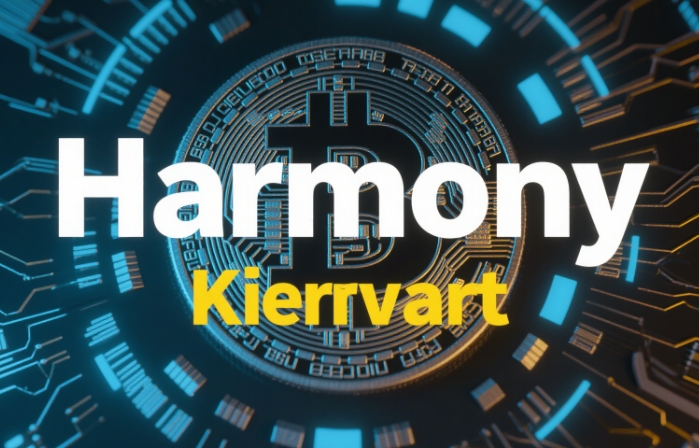In the ever-evolving world of cryptocurrency, blockchain technology continues to be the driving force behind innovation. Among the notable blockchain projects, Harmony has been gaining attention due t
In the ever-evolving world of cryptocurrency, blockchain technology continues to be the driving force behind innovation. Among the notable blockchain projects, Harmony has been gaining attention due to its focus on scalability, speed, and low transaction costs, making it a promising platform for decentralized applications (dApps) and decentralized finance (DeFi). This article explores Harmony's unique features, its contributions to the blockchain ecosystem, and how it stands out in a crowded field.
What is Harmony?
Harmony is a decentralized blockchain platform designed to address some of the most significant limitations in existing blockchain technologies. Founded in 2018 by a team of experienced professionals, including former Google and Apple engineers, Harmony's primary goal is to create a fast, secure, and scalable platform that supports decentralized applications.
At its core, Harmony aims to overcome the scalability issue that has plagued many established blockchains like Bitcoin and Ethereum. By offering higher throughput and lower latency, it enables developers to build efficient and high-performance dApps and DeFi platforms.
Key Features of Harmony
1. Sharding for Scalability
One of Harmony’s most significant innovations is its use of sharding. Sharding is a technique that breaks the blockchain into smaller, more manageable pieces or "shards." Each shard can process transactions and smart contracts independently, which drastically increases the network’s capacity and reduces bottlenecks.
In traditional blockchain models, every node in the network must process every transaction. This approach limits the scalability of the network as it struggles to handle a large volume of transactions. Harmony, by contrast, distributes the transaction load across multiple shards, allowing the network to process thousands of transactions per second (TPS).
2. Effective Consensus Mechanism: The Effective Proof of Stake (EPoS)
Harmony utilizes an advanced consensus mechanism called Effective Proof of Stake (EPoS). EPoS combines the security of Proof of Stake (PoS) with innovations that improve network performance. It encourages active participation from stakers by limiting the number of validators who can produce blocks, thus ensuring a secure and fair system.
The EPoS mechanism is designed to minimize the centralization of staking, allowing a more decentralized validator set. This is a crucial feature as it ensures that the network remains secure and trustworthy while maintaining efficiency.

3. Cross-Chain Compatibility
Another critical feature of Harmony is its focus on cross-chain interoperability. In the world of decentralized finance, assets are often spread across different blockchain networks. Harmony's cross-chain capabilities allow assets to move seamlessly between different blockchain ecosystems, enabling users to access a broader range of services and applications.
By supporting Ethereum and other blockchain ecosystems through bridges and cross-chain communication protocols, Harmony enhances the overall functionality of the DeFi space. This feature opens up new opportunities for users and developers by enabling them to interact with multiple blockchain networks on a single platform.
Harmony’s Role in Decentralized Finance (DeFi)
Harmony's design and features make it an ideal platform for DeFi applications. The scalability and speed of the Harmony blockchain allow developers to build decentralized exchanges (DEXs), lending platforms, and other financial services that can handle a large number of transactions in real time. These features are critical in an industry where transaction speed and low fees are paramount.
With Harmony, users can benefit from reduced transaction costs and faster confirmation times compared to other blockchains. This makes it an attractive option for both developers looking to create new DeFi applications and users who want to interact with them efficiently.
Additionally, Harmony’s EPoS mechanism ensures that the network remains secure, reducing the risk of centralization that could otherwise impact the fairness and security of DeFi platforms.
Harmony’s Future and Challenges
Despite its promising features, Harmony faces challenges in gaining widespread adoption. The blockchain space is highly competitive, with numerous projects vying for attention. For Harmony to become a leading platform, it will need to attract more developers, dApp users, and liquidity providers to its ecosystem.
Furthermore, Harmony must continue to refine its technology, enhance user experience, and address any potential security concerns that arise. However, with the ongoing development and growing support within the community, Harmony is poised to play a significant role in the evolution of decentralized finance.
Conclusion
In conclusion, Harmony offers an innovative solution to the scalability and interoperability challenges faced by traditional blockchains. Its focus on sharding, an effective consensus mechanism, and cross-chain compatibility positions it as a strong contender in the blockchain space, particularly within the realm of decentralized finance.
As the DeFi industry continues to grow, Harmony's features and capabilities make it a platform worth watching. Whether you're a developer looking to build dApps or a user seeking fast and low-cost transactions, Harmony’s ecosystem offers a promising environment for innovation and growth.
For more insights on blockchain technology and the latest trends in the cryptocurrency space, visit Coin78 – your go-to source for exchange and blockchain information.
1. The information content does not constitute investment advice, investors should make independent decisions and bear their own risks
2. The copyright of this article belongs to the original author, and only represents the author's personal views, not the views or positions of Coin78. This article comes from news media and does not represent the views and positions of this website.
 USD
USD CNY
CNY HKD
HKD TWD
TWD VND
VND USDT
USDT